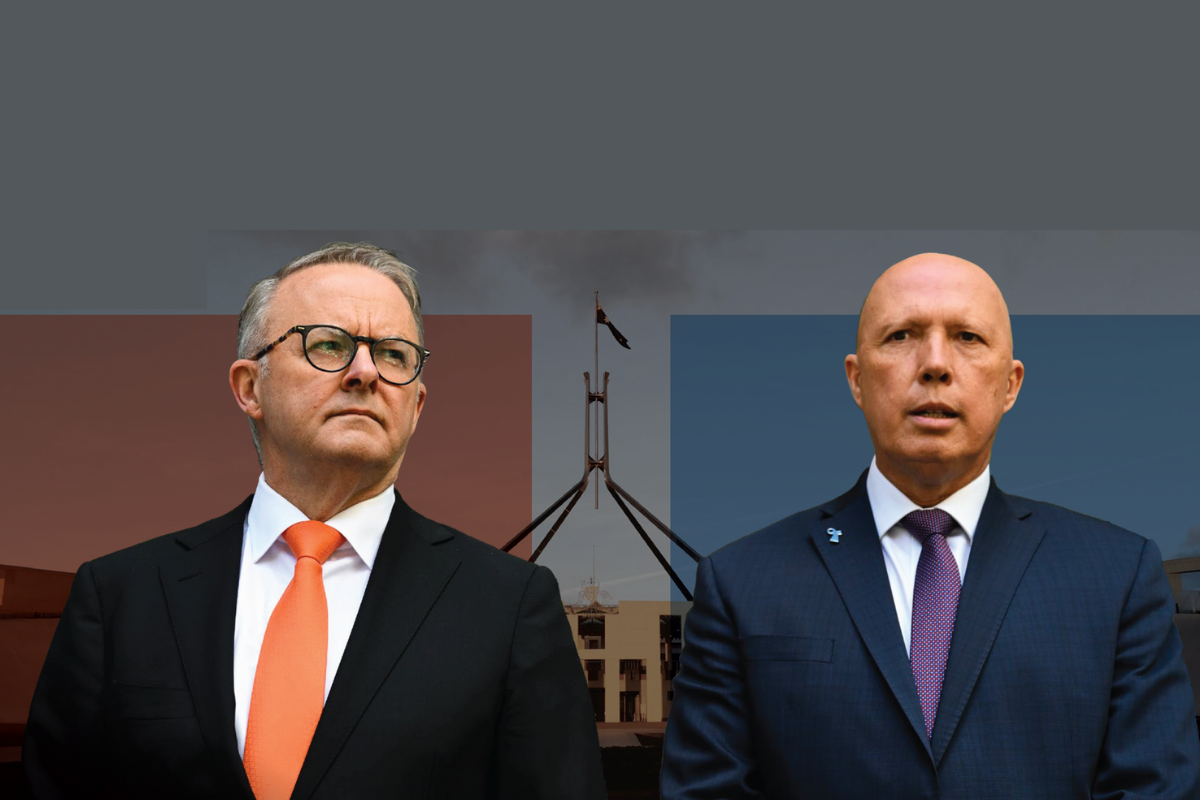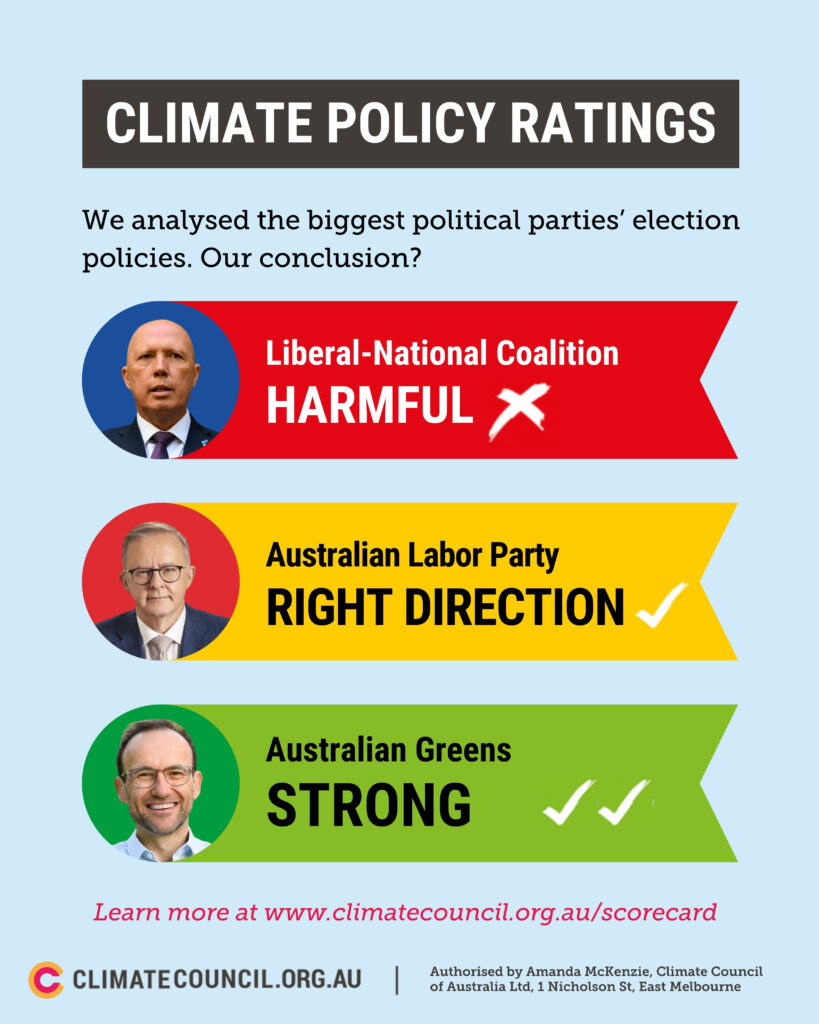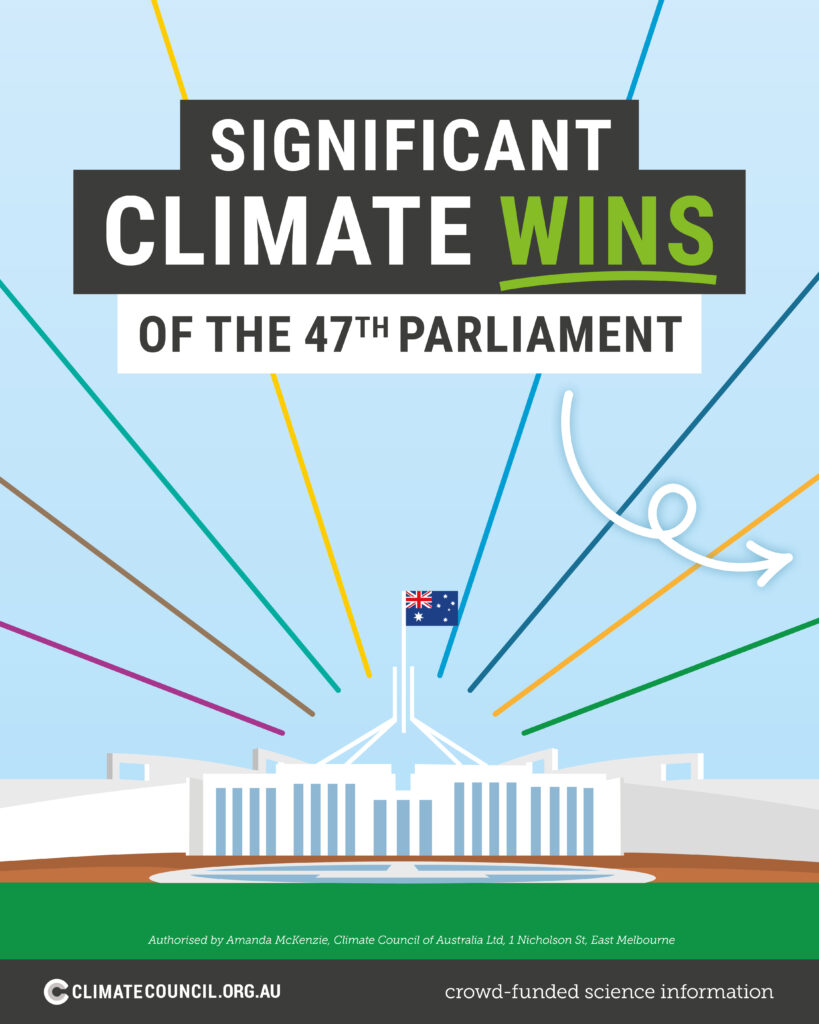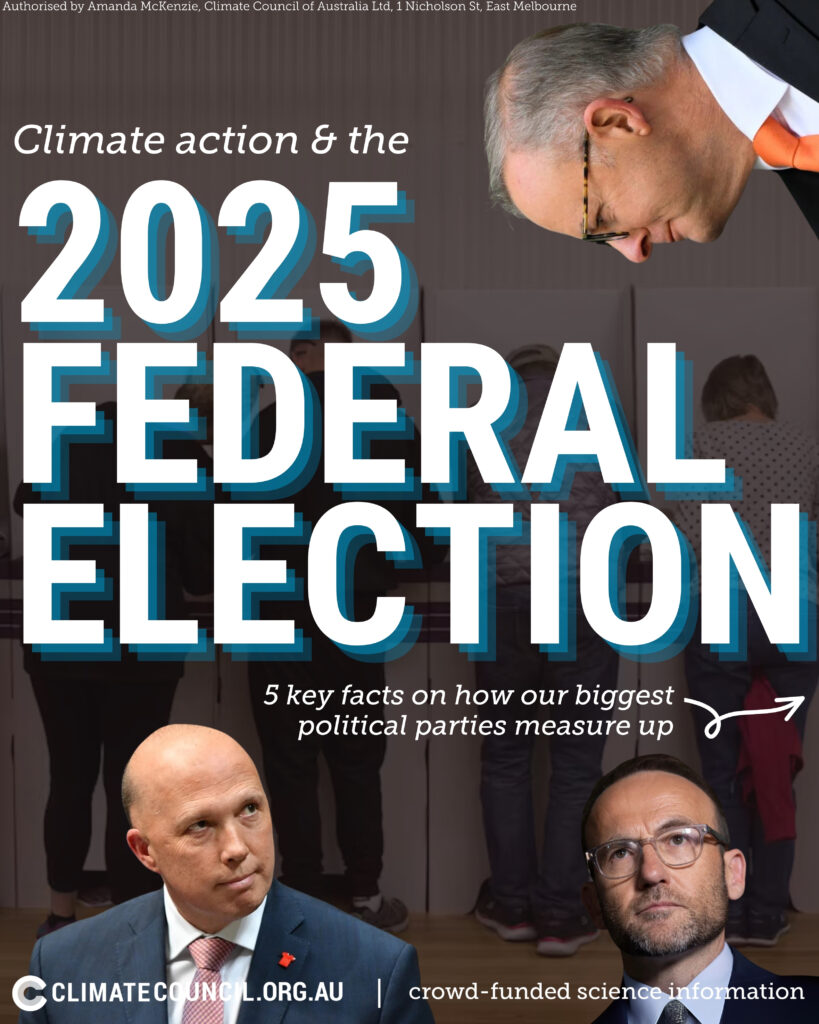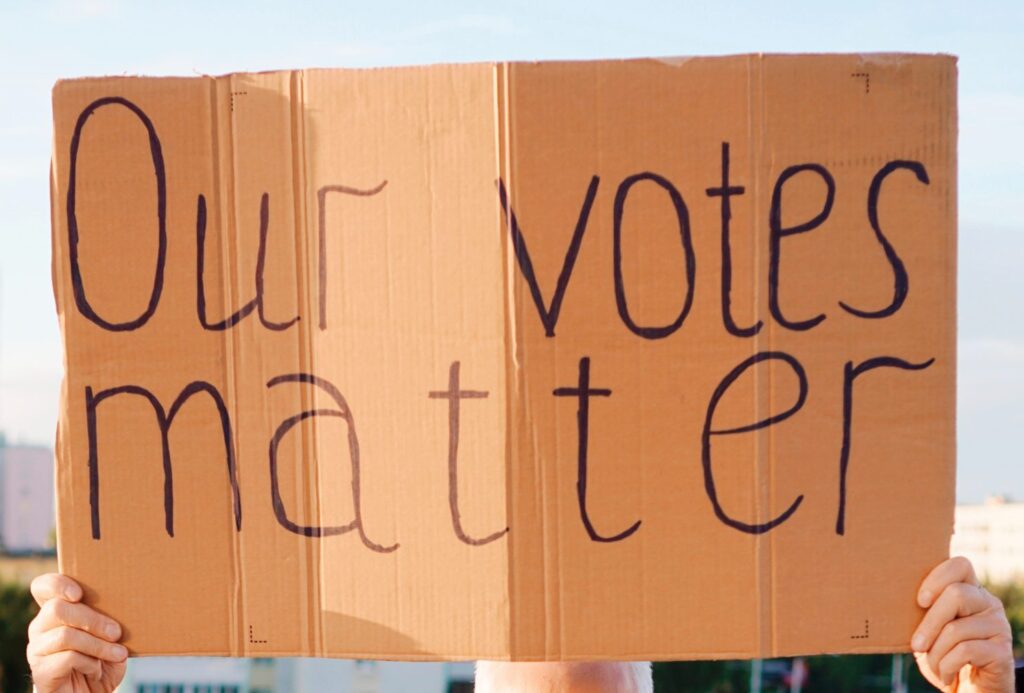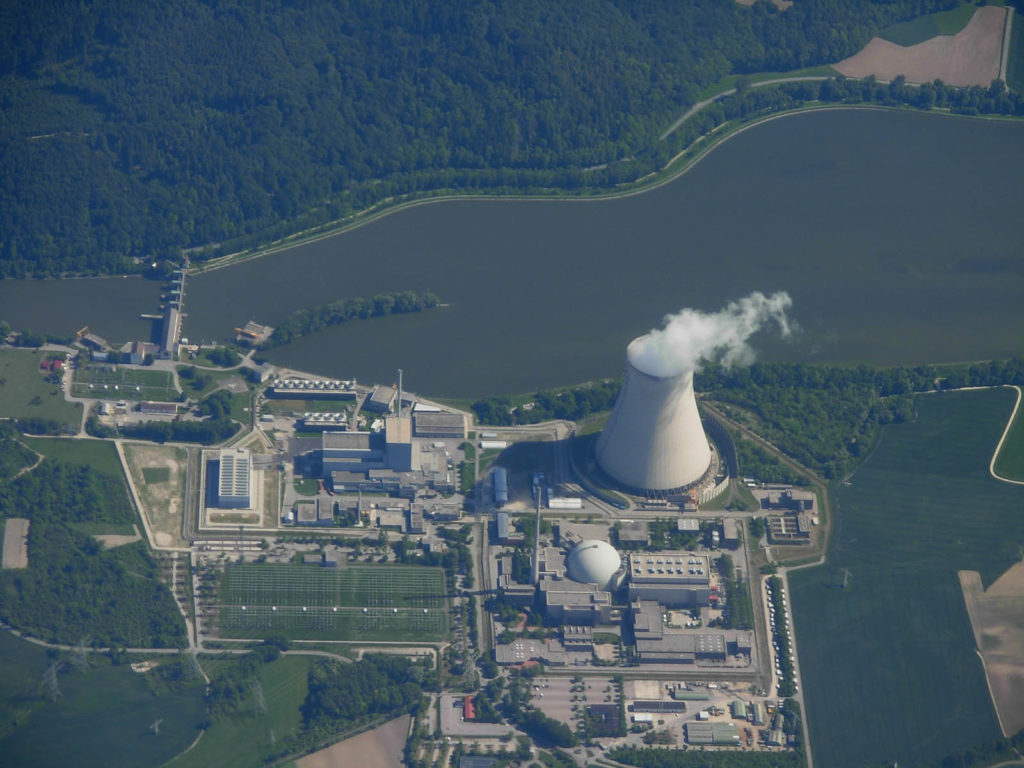The 2025 Federal Election is a critical turning point for climate action. Every decision made in the next term of Parliament will set Australia’s climate trajectory for decades to come, and determine whether we can secure a safer future for our kids.
To help Australians make informed decisions at the ballot box, the Climate Council has released its election report and scorecard of Australia’s biggest political parties: ‘Climate Crossroads: Progress, Politics and a Pivotal Election’.
The report assesses the track records and promises of the major parties and key crossbenchers, based on expert analysis of policy platforms and voting history. The findings:
❌ The Liberal–National Coalition is rated Harmful
➡️ The Australian Labor Party is rated Right direction
✅ The Australian Greens are rated Strong
The report finds that voters have a clear choice: between Labor, which has a credible plan to cut climate pollution, and the Federal Coalition, which is proposing polluting policies that will put more of us in harm’s way.
Key findings:
1. We analysed the climate record and election policies of Australia’s major parties, and found that the Albanese Labor Government has delivered clear progress, and the Liberal- National Coalition ranks the worst on climate change.
- The Albanese Labor Government made clear progress on renewable energy, clean transport and climate targets in this term of Parliament, and have credible policies to deliver in the next. However, Labor’s approval of 26 coal, oil and gas developments undermined their record, and they have no clear plans to phase out future fossil fuel development. Rating: Right Direction.
- The Liberal-National Coalition voted against every law to cut climate pollution in the past three years and their policies would increase climate pollution by at least 6.3 billion tonnes. Rating: Harmful.
- The Australian Greens have the strongest climate policies of all parties. Rating: Strong.
- Independents made valuable contributions to strengthening climate action during the past three years, and their influence is only expected to grow in the likely event of a hung parliament.
2. The last Parliament performed a major u-turn on climate, with significant progress made. The next Parliament could get us on track this decade.
- At the last election in 2022, Australia was a global climate pariah, following nine years of inaction under successive Liberal-National Governments. Renewable power investment had stalled, climate science had been cut, and Australia had no credible policies to reduce climate pollution.
- Three years later and Australia is nearly halfway to powering our nation with renewable power, and commands significant international respect.
- Australians are already paying dearly for the failure of former governments, here and around the world, to slash climate pollution. The severity of events we face into the future rests entirely on how quickly and deeply the world cuts pollution from coal, oil and gas.
- The next term of Parliament will be crucial to protect our kids’ future. Crucial to slashing climate pollution, building a 21st century energy system and building the clean industries that can power jobs and communities for decades to come.
3. The Albanese Labor Government made significant progress cutting climate pollution and ramping up renewables, but failed to curb fossil fuel expansion. Key milestones included:
- Cutting Australia’s expected 2030 climate pollution by 39 million tonnes, and strengthening our target to a 43% cut this decade (up from 26-28% under the previous government).
- Adopting a renewable energy target of 82% this decade, and unlocking $87 billion of public and private investment in renewable power, storage and transmission.
- Creating vehicle standards to ensure new cars use less petrol and release less pollution, and investing $100 million in active transport infrastructure, like safer bike lanes.
- Setting stricter limits on Australia’s biggest industrial polluters via reforms to the Safeguard Mechanism.
- During this term, Labor approved 26 new coal, oil and gas developments and broke a key election promise to fix Australia’s environment laws, instead weakening them. Labor has no clear plan to limit fossil fuel development, which substantially undermines their policies to cut climate pollution.
- If elected, the Labor party has promised to:
- Continue efforts to cut climate pollution by 43% on 2005 levels this decade, and legislate a 2035 target.
- Double Australia’s renewable power backed by storage to 82% this decade and has announced clear policies and investments to achieve this.
- Continue delivering the New Vehicle Efficiency Scheme, giving Australians access to cleaner and cheaper-to-run new cars.
- Reform our national environment laws and deliver a federal environment protection agency, which it failed to deliver this term.
- While encouraging, the Labor Government’s progress does not go far enough or fast enough to do our fair share in limiting global heating to well under 2 degrees and protect Australian’s from the worst impacts of climate change.
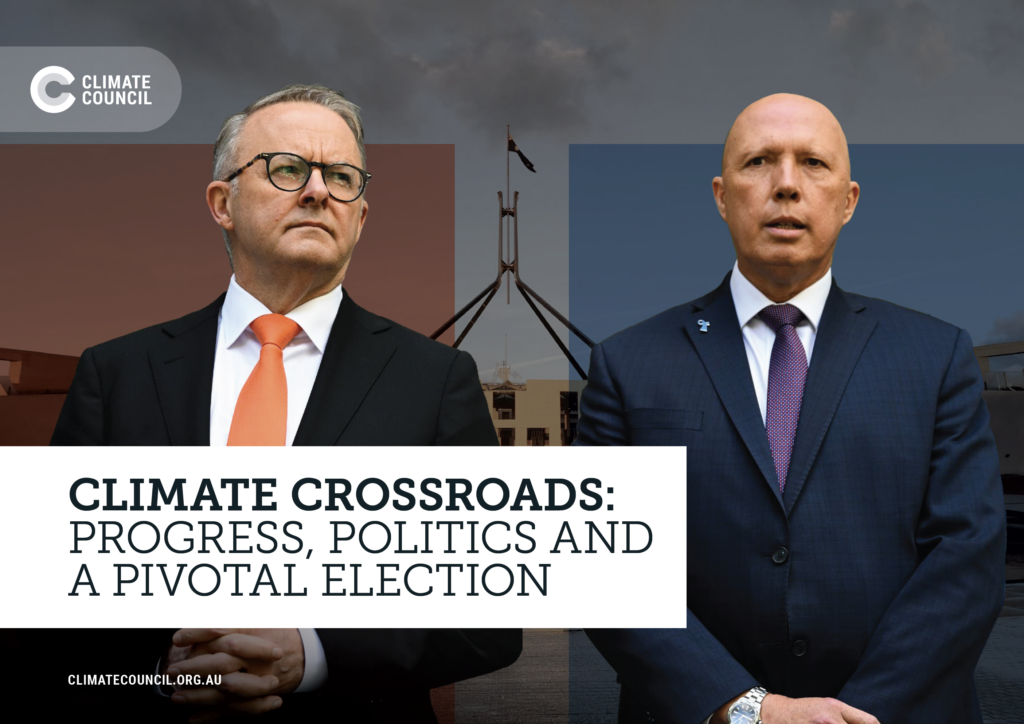
4. Crossbenchers, including the Australian Greens and community independents, pushed the Labor Government to deliver stronger climate reforms.
- Independents successfully secured key amendments to strengthen the Climate Change Bill 2022 and advocated for greater household electrification support.
- Crossbenchers also attempted to progress other reforms – to ensure our targets are science-aligned, prevent new coal and gas projects, and better regulate big polluters – which were ultimately blocked.
- The Australian Greens supported every single climate action bill and secured a number of important amendments, including placing a hard cap on climate pollution from big polluters, preventing certain public funds from supporting coal and gas projects, and protecting clean energy investment from future government rollbacks.
- A strong, pro-climate crossbench could further strengthen Australia’s climate policy in the next parliamentary term, particularly in the likely event of a hung parliament.
5. The Liberal-National Coalition voted against every law to cut climate pollution in the past three years. Their policies for this election would increase climate pollution by at least 6.3 billion tonnes. Their policies have been rated as Harmful.
- The Coalition failed to support a single improvement in climate policy throughout the 47th Parliamentary term.
- If elected, the Federal Coalition plans to:
- Abandon Australia’s climate pollution reduction target of 43% by 2030.
- Introduce a nuclear scheme that would lock in at least two billion more tonnes of pollution from coal, oil and gas.
- Provide $1.3 billion in funding for the gas industry, and ramp up polluting gas production by fast-tracking approval of new gas projects and expanding existing gas projects, including the North West Shelf in WA.1
- Undermine support for renewable power by cutting $20 billion in funding for essential grid upgrades, weaken pollution standards for vehicles and wind back regulation on industrial polluters.
The Coalition has no credible plans to cut climate pollution. Together the Coalition’s policies would dramatically increase climate pollution, driving more frequent and damaging extreme weather.
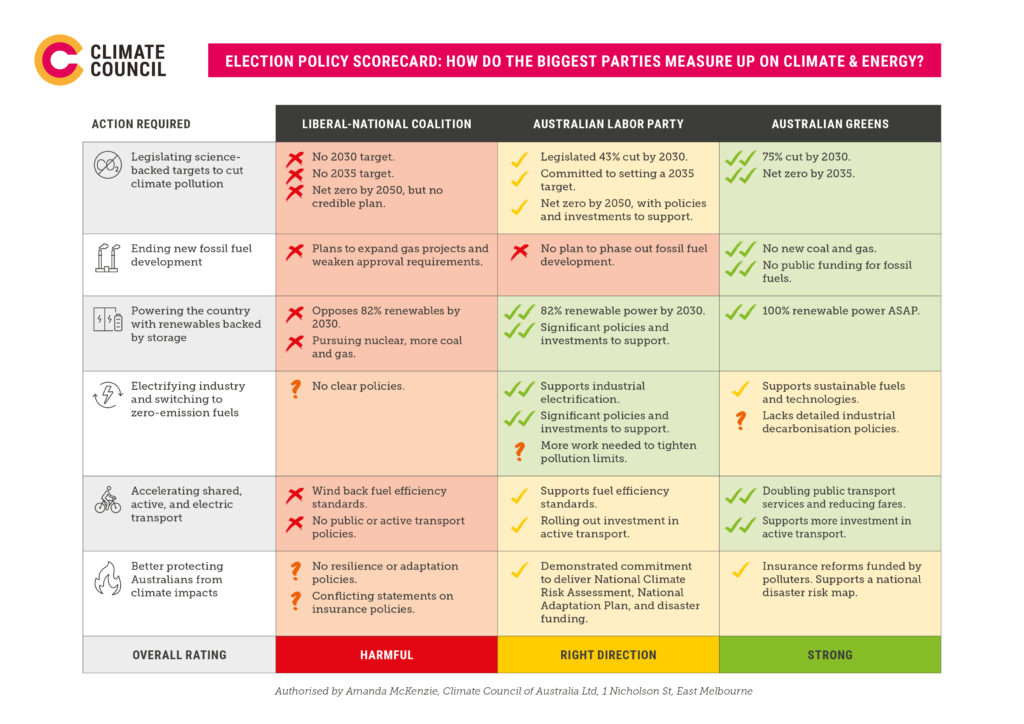
Social media content
We created a suite of social media content for you/your organisation to download and share amongst your networks. Click here to see our full social media pack for assets, suggested captions, and more!
Help us get the word out: We’ve created a series of downloadable posters showing how the different parties stack up on climate this election. Print them at home and pop them in your window, on a community notice board and anywhere else that shows your community exactly who – and what – we’re being asked to vote for this election (just check you’ve got permission first!).
Climate Council is non-partisan and advocates for evidence-based policies that will progress science-aligned climate action.
Authorised by Amanda McKenzie, Climate Council of Australia Ltd, 1 Nicholson St, East Melbourne.

